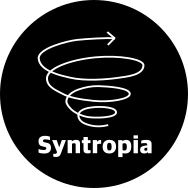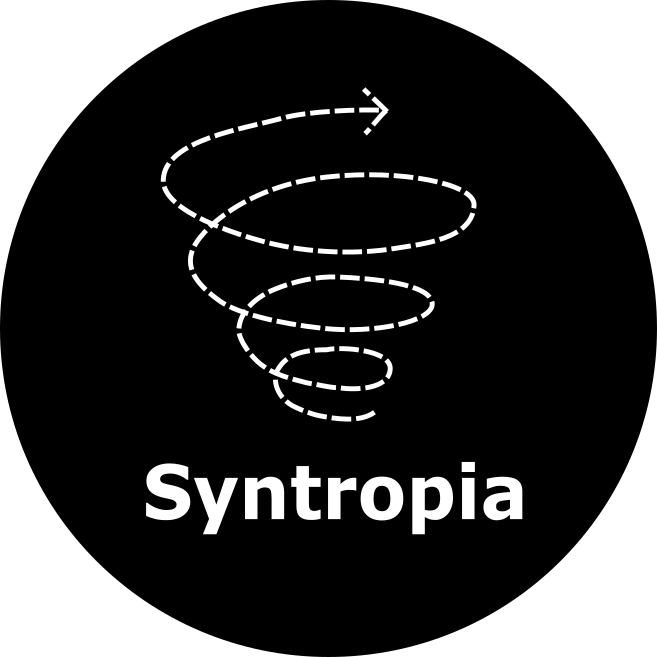A Definition of Regenerative Agriculture
There is a lot of talk about regenerative agriculture lately. It is a new buzzword, and rightly so. Regenerative agriculture is a potent way forward in an age of limits, depletion and destruction of our environment. Regenerative agriculture has the potential to form a new basis of economic growth in primary production, which of course, being primary production, forms the basis of a lot of other economic activity and community growth - and it is all driven by… sunshine!
However, there are problems with how regen ag is perceived, which can have a lot of unintended consequences. A lack of correct perception allows regenerative agriculture to be homogenised into a vague idea that it is natural, a hodgepodge of different natural farming methods, it also allows many organic and other less contemporary practices to be included and re-labelled as such.
There are also other issues, one in particular that I have perceived, is that because of the fantastic reception that it has found in the public consciousness, it has been picked up by the marketing, branding and greenwash juggernaut which is a strong and dominating element within our culture. Political, commercial and fund seeking interests will direct resources towards themselves for their own benefit. They have a much more powerful voice than farmers, who are far too busy immersed in day to day practice, and lack the skills and resources to achieve the same impact. It stands to reason that the ones consumed in the practice of regenerative agriculture, who are professional in this field do not have the same influence as those who are professional and consumed in the practice of influence, and it is natural that they will direct resources generated by public support of regenerative agriculture toward themselves. There is no blame here, it is just the nature of the beast.
Far from being negative, I do not see this as an obstacle, I see that a lot of good comes from this. It is raising the bar for performance from the regenerative agricultural sector and asking us to meet the perception with strong outcomes, quality and performance. It is part of my job as an early adopter in the regen ag field to give the public results, to demonstrate the reality and to connect with the public and build on this very positive thing that we have.
So instead of seeing this as a problem, I take great pleasure in sharing my explanation of regenerative agriculture with you.
Let me begin with a simple separation of regenerative agriculture from other farming practices..
Conventional agriculture, including organic, is input driven.
Regenerative agriculture is driven by in situ ecological function, where the farm is a living, complete interconnected ecology and the yield is a byproduct.
Organic agriculture is broadly defined as food grown without industrial chemicals and artificial fertilisers. It largely stops there, there are other nuances, but the main thing about organic agriculture is that it is input based. Organic agriculture can use compost, manure, specialised brews used as sprays to deter pests, and foliar fertilisation etc, but these inputs are external to the ecology in which the food is grown - the ecology is still relatively simple and therefore unstable, for example “pests” will always want to re establish ecological balance, fertility will deplete because it is not a natural ecosystem. Fertilisers (compost etc) are generated and supplied from outside the ecology of the place of production, and although the results in organic agriculture are good, the costs are externalised - it is robbing Peter to pay Paul. Somewhere out there, off the farm, there is an industrial process supporting the manufacturing and transportation of these inputs, and of course this is only possible with fossil fuels. So what we can do is categorise all other agriculture as input based, even conventional agriculture.
In terms of energy accounting as opposed to money accounting, this becomes crystal clear and obvious.
Now let's talk about how I define regenerative agriculture in a little bit more detail.
As mentioned, regenerative agriculture is driven by in situ ecological processes, which have been largely put into clear and precise management frameworks by two main pioneers - Alan Savory and Ernst Gotsch. Now, I need to be really clear here, this is not something that is just an understanding of ecology, as that is quite well known, what I stress is that the function of ecology has been put into a specific and precise framework for agricultural production! - This is the breakthrough, as the results are showing.
Ecology is, for the sake of this topic, put simply as the interconnected dynamic of life which results in ever increasing complexity - syntropy is another word for this.
That means that the ever increasing power of life, which once covered the planet in immense density, is the driving function of a regenerative farm - no need to get anything from the fertiliser shop!
Seriously, did anyone fertilise the Amazon rainforest to make it what it is? Did anyone put compost on the great savannas of America and Africa to feed those inconceivably huge herds of herbivores?
Getting back to those two pioneers, Ernst Gotsch and Alan Savory. These two people are of equal and complimentary importance, this is because they both discovered how to put these ecological functions into agriculturally productive management frameworks in the two most important productive biomes on planet earth - the woodlands and forests (trees) and the great savannas (grasses). Ernst developed the solution to applying functional ecological management in woodland, where Alan developed the solution for savanna and rangeland. Their insights are almost the same when examined from the perspective of the underlying principles, which is no surprise, as life on earth is a universal dynamic.
They both went to hell and back trying to work out their own particular problem which amounted to profound and broad reaching solutions. In trying to solve their respective problems, they found that the cause, and the solution lay far outside of just their own circumstances, and they developed a very holistic approach stemming from all things, such as culture, values, ecology, botany, physics etc. Coming from this broad context, they were able to develop solutions that impacted how they farmed. These people are those rare types who make such significant changes, where the transformative results may not be fully understood by our culture until years after their passing.
Alan Savory’s solution is called “Holistic Management”
Ernst Gotsch’s solution is called “Syntropic Agriculture”
One for forests, one for savannas - the two major biomes which support humanity.
When combined the power is increased even more, as forest and grassland edge dynamics are very powerful, and productive. In the future, when we are fed by this type of production, this dynamic is what will produce your tomatoes, mineralise and add protein to the diet of your stock and much, much more!
Now that I have explained the two frameworks, does that limit the form or expression that regenerative agriculture takes? Far from it.
"As to methods, there maybe a
million and then some, but principles
are few. Those who grasp
principles can successfully select their
own method”
Ralph Waldo Emerson
This quote exactly describes the unlimited options you have available, creativity is the only limit. What can you grow? Anything that the two main biomes that support humanity provide!
At first glance it does sound limiting considering that two major frameworks dominate the principle, but this can take any form, just as the quote suggests.
Things like:
Tree rows through grain crops, integrated with holistically managed grazing - the quorum effect from syntropic tree rows are off the charts.
Pastured poultry, with the added ecological benefit of tree rows each side, which also provide food for the birds via tree yields.
Short life cycle edge type crops grown in the alleys, such as ginger, berries etc.
Whatever your context demands, it is just a simple case of writing down what your desired yields are, and then arranging them into an ecology!
Interest in, learning and understanding regenerative agriculture is growing quickly and I recommend learning Holistic Management with Brian Wehlberg of Inside Outside Management, or Glen Chapman of Southern Blue Regenerative, the Regrarians platform with Darren Dougherty, where many other associated and supportive methods and practices are included. For Syntropic Agriculture, you can learn with me on “The Pathway to Regeneration” platform, which is a thriving international online community with built in online courses, group learning, plus many other resources. There are also many workshops available where short courses in Syntropic Agriculture are taught. My recommendation, like I have done myself, as have many others, is to do all of the courses, with all of the teachers. This is a very insignificant cost, particularly in comparison to what you get out of it - it is already transforming people's lives.
For a clear understanding and to attain a functional level, a good education is needed. It is not rocket surgery, but like anything worth knowing, it takes a bit of investment and commitment. I strongly encourage anyone interested in joining us in creating a regenerative and prosperous future, no matter how you want to be involved, to study and learn, bring your talent and join our large, international and rapidly growing community.
Thank you for reading,
Scott.


